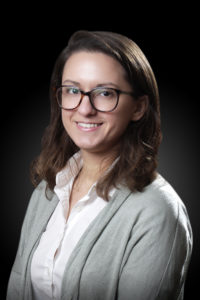 This post was written by Carolina Hernandez (@carolina_hrndz), who was selected to be one of this year’s virtual DLF Forum Community Journalists.
This post was written by Carolina Hernandez (@carolina_hrndz), who was selected to be one of this year’s virtual DLF Forum Community Journalists.
Carolina Hernandez is currently an Instruction Librarian at the University of Houston where she collaborates on creating inclusive learning environments for students. Previously, she was the Journalism Librarian at the University of Oregon, where she co-managed the Oregon Digital Newspaper Program. Her MLIS is from the University of Wisconsin-Madison. Her current research interests are in critical information literacy, inclusive pedagogy, and most recently, the intersection of digital collections and pedagogy.
I have been interested in attending the DLF Forum for a few years now, but the timing was never quite right until this year. With the conference being both online and free, it was a no brainer for me to finally attend. Considering I am an Instruction Librarian, though, it may seem like an odd choice for me. However, in part because of my previous experience with curating the Oregon Digital Newspaper Project at the University of Oregon, I’ve been interested in exploring the many ways digital library technologies and digital collections themselves can be incorporated into information literacy instruction. With COVID-19 entirely moving our instruction to the online realm, this interest has become an imperative. This conference has confirmed for me that there are many ways these areas intersect and could inform my instructional approach.
While many of the sessions I watched did not directly address pedagogy, there was still so much I was able to glean from the presentations that I could take back to my realm. The main thing that popped out at me was the way so many presenters addressed accessibility in one way or another. Of course, this stood out the most with the “Creating Accessible and Inclusive Content” combo session, which began with Rebecca Bayeck’s clarification of the difference between accessibility and inclusivity, two terms that are often used interchangeably. While accessibility is more about making sure that the final product is “usable by people with all abilities,” Bayeck made the important distinction that inclusivity goes a step beyond that to also make sure individuals “feel comfortable/safe when using [it].” This is something I try to keep in mind when lesson planning, how it’s important to not only make sure that students are able to access the learning materials in whatever way works best for them, but that they also find the relevance of information literacy to their own lives.
In another presentation from this session, Daniella Levy-Pinto and Mark Weiler noted some of these issues, such as “unlabeled buttons or links,” which can be hard to identify properly for those using screen readers. In fact, several presenters and attendees emphasized the importance of testing platforms and content with screen readers. Carli Spina also spoke about the importance of including audio descriptions and transcripts for audio-video content and also mentioned specific tools, such as CADET, that can help create these necessary points of access. CADET, or Caption and Description Editing Tool, is free and allows you to create captions and timed scripts, but it can also be used to more easily add audio descriptions.

It was helpful to see some of these accessibility best practices in action via the conference itself. Because presentations were recorded in advance, they were able to include both closed captioning and transcripts for each one. Conference coordinators encouraged attendees to make their postings in Slack accessible as well by including image descriptions whenever a picture was included. This emphasized for me how it’s not only important to create accessible learning materials, but to foster a community that encourages others to follow suit. It is a helpful model for my instruction team as we move forward with helping our liaison colleagues with their own instruction.
As I’ve been considering how to build lesson plans and activities around digital collections, the other session that stood out to me was the panel “US Latino DH: Recovering the Past, Creating the Future.” The presenters Gabriela Baeza Ventura, Carolina Villarroel, Linda Garcia Merchant, and Lorena Gauthereau spoke about the US Latino Digital Humanities Program based at the University of Houston, my current institution. This made their work immediately relevant to mine, as they are already working with part of the same community I teach. What stood out to me most, though, was their use of “Omeka as Pedagogy.” Baeza Ventura talked about her specific experience with teaching an undergraduate class wherein students used Omeka to curate an exhibit, thus allowing them to “contribute to knowledge production.” This Freirean approach to teaching is very much in line with our instruction team’s programmatic information literacy outcomes, which focus on encouraging students to see themselves as information creators.
With a lot about the coming year still up in the air, my team and I plan to continue our efforts to strengthen both the synchronous and asynchronous online learning content we offer as it seems likely the demand for online teaching will certainly not go away. I am looking forward to bringing a lot of these ideas from the DLF community back to my department and finding ways to incorporate them into our pedagogy.
